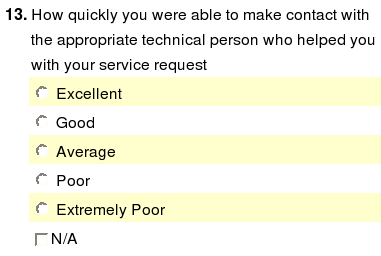Recently we bought a low-end IBM xSeries 306m server to handle generic IT utility tasks, such as hosting an installation of Request Tracker, Cacti and, in the near future, Nagios. The server came with a pair of 160GB SATA disks attached to a ServeRAID-8e HostRAID controller. I quickly discovered that HostRAID is an awful hack; it’s not real hardware RAID, but software-emulated RAID, utilizing the host system’s SATA controller to do the actual I/O to the disks, but with the RAID processing done in software using a proprietary driver, in my case, a driver called adpahci. In other words, it’s "A Fake RAID", which some pundits have noted collapses into the fitting acronym AFRAID.
Several admins have criticized HostRAID for a number of reasons:
- Performance is terrible because the AFRAID controller must do polled I/O (PIO) through the CPU
- The drivers are, by nature, proprietary, since the RAID logic is licensed from a third party
- Limited sophistication in array rebuilds, since the controller has a minimal BIOS and online rebuilds are not possible
- Disks in an AFRAID array are probably unusable outside of the array, given that the driver is chipset-specific
Although I don’t really care about performance for such a low-end utility box, I have been seriously bitten by the second point. We use RedHat Enterprise Linux 4 Update 3 on all production servers like my utility box. IBM only provides binary HostRAID drivers up to RHEL4 Update 2. You can allegedly rebuild the drivers using a SHIM from Adaptec, but it doesn’t work; although the SHIM package contains C drivers for all the Adaptec HostRAID controllers (aar81xx, adp94xx, adpahci, adpsata, etc.) the only binary blob you can obtain is the one for the aar81xx. Ergo, I am S.O.L. I’m stuck with a RHEL 4 Update 3 userland on a RHEL 4 Update 2 kernel.
I guess the appropriate solution if you’re going to buy this model of server (with SATA) is to ditch the on-board AFRAID and buy a ServeRAID-7t SATA controller, which has a real 80302 processor and 64MB of cache memory, or any of the other ServeRAID products which fit in the server.
On a final note, what the heck is with IBM’s insane naming schemes for all of its ServeRAID products? I can’t keep the 6i+, 7t, 7k, 7e, 8e, 8i, 6M, etc. straight — can you? Have a look at this driver matrix and your eyes will glaze over. Why don’t they name the controllers something meaningful?
